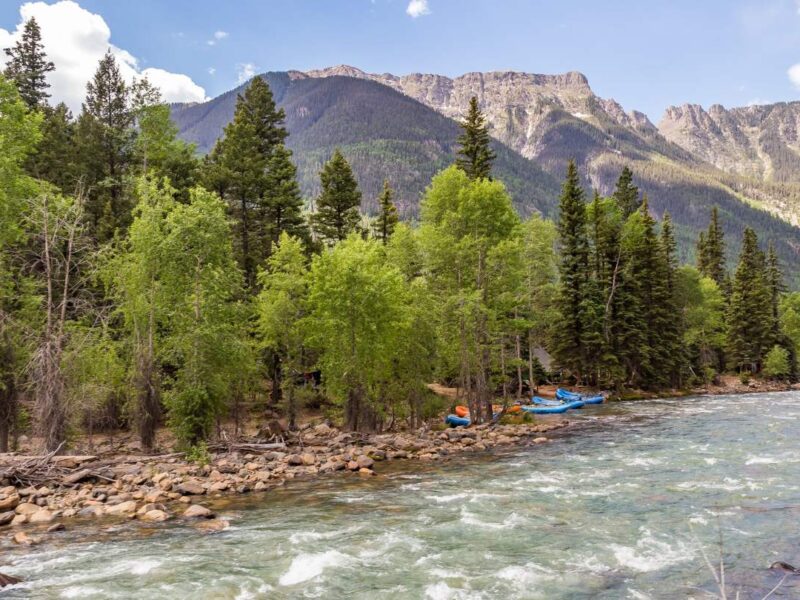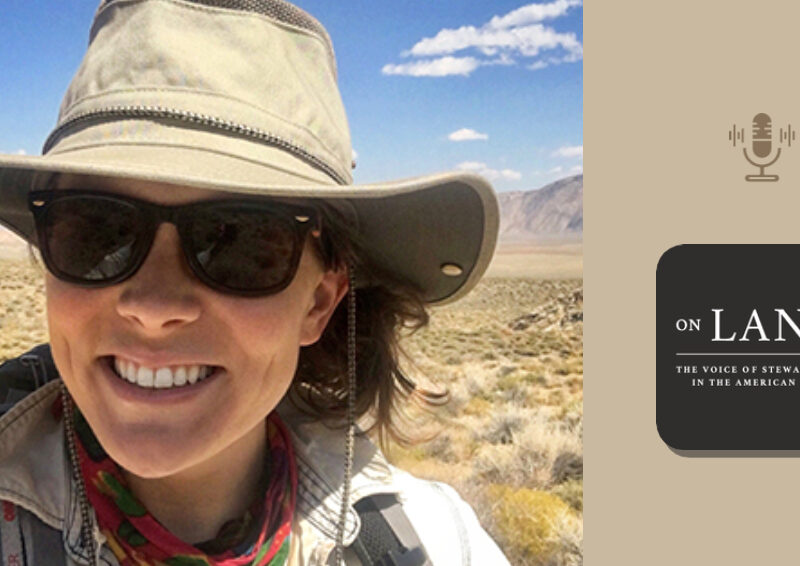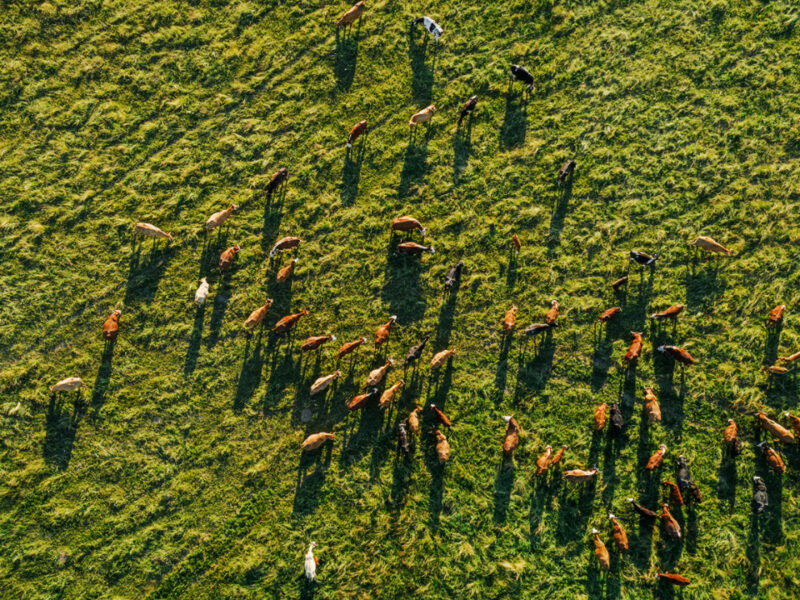Details on EQIP CIC Drought Relief Pilot: Catherine Magee of Oregon NRCS speaks with WLA
The USDA recently announced new funding availability in California, Oregon, Colorado and Arizona under the Natural Resource Conservation Service’s Environmental Quality Incentives Program (EQIP) Conservation Incentive Contracts (CIC) in response to the worsening drought in those states. WLA’s stewardship coordinator Breanna Owens, who also ranches with her partner in northern California, spoke to Oregon NRCS assistant state conservationist Catherine Magee to illuminate the details that farmers and ranchers need to know to determine whether they qualify and should contact their local NRCS office to learn more. Applications are due July 12th, so listen now and act fast!
Listen to the interview above, or read a lightly-edited transcript of the conversation below.
Breanna Owens: Today, I’m speaking with Catherine Magee, who is the Oregon NRCS assistant state conservationist for programs based out of the state office in Portland. This new program is in its pilot year being rolled out in California, Oregon, Colorado and Arizona. And just a quick note that if you’re interested in CIC, contact your local NRCS field office soon, as you’ll need to submit paperwork by July 12th if you’d like to be considered for a contract under the program. Hi, Catherine. Thank you very much for joining me today to talk about this new program.
Catherine Magee: Hi, Breanna. Nice to nice to talk with you.
Bre Owens: So I’ll just start in on some questions and just to start off with, can you please give us an overview of CIC and the goals of the program?
Catherine Magee: Yes, so CIC is a new program that is actually under EQIP, so it’s called EQIP CIC, and this program combines the familiarity of EQIP with the flexibility, focus and increased funding ceilings provided by CIC. CIC gives the producers the conservation practices of EQIP, plus the enhancements previously only available through our CSP program. This package is a five year funding option and it will support producers efforts to successfully deal with recurring drought conditions and other priority resource concerns. So we are one of the four pilot states and we have about 7.534 Million dollars to put into EQIP CIC. And we have three different funding pool options: EQIP CIC General, which is has five million dollars in it. Our priorities for this are: Drought, wildfire and climate smart, and then we also have a drought funding option, which has 1.4 Million dollars in it, and then we have just a specific Klamath Basin funding option, which has 1.134 Million dollars in it.
This package is a five year funding option and it will support producers efforts to successfully deal with recurring drought conditions and other priority resource concerns. So we are one of the four pilot states and we have about 7.534 Million dollars to put into EQIP CIC.
Catherine Magee
Bre Owens: Can you speak a little bit more about the differences between CIC and traditional EQIP and CSP with it being the stepping stone program?
Catherine Magee: Yes, so CIC allows producers to add enhancements to their contracts and enhancements were previously only available through CSP and not available through a standalone EQIP contract. So for producers interested in the longer term opportunities of CSP but unable or unwilling to implement them on their entire operation, CIC provides the option of working on just a portion of their farm or ranch and not just the entire operation. So CIC is going to be very similar to CSP in that it will be a five year program. It will offer enhancements and practices, but you do not have to enroll your entire operation. It’s a stepping stone, in that producers can kind of get their feet wet, try out some enhancements, work on practices which are more aligned with fixing major resource concerns, but only maybe try it out on a portion of their farm instead of instead of their full operation.
So for producers interested in the longer term opportunities of CSP but unable or unwilling to implement them on their entire operation, CIC provides the option of working on just a portion of their farm or ranch and not just the entire operation.
Catherine Magee
Bre Owens: In terms of the number of practices or the number of enhancements, are there any requirements or is there a certain percentage or ratio of practices to enhancements, or are there any minimum number of practices or enhancements that need to be implemented through CIC?
Catherine Magee: Yeah, so producers don’t have to enroll any practices. Actually, in CIC, they can just enroll enhancements, but you have to at a minimum, enroll one enhancement. You have to have either one enhancement or practice that is implemented within the first 12 months of your contract, which is just a general EQIP rule that we have for all standard EQIP contracts. If you enroll a practice, like with any EQIP contract, it has to be to our standard. So a conservationist will go out and check to make sure it’s done correctly to our standard. And then we pay you right away for that practice of implementation, whereas an enhancement you self-certify that you put that enhancement on the ground and then you get paid once a year. So it’s not necessarily directly after you implement the enhancement. It’s probably more towards the end of the year. Typically you’ll be paid around December. So if you have an enhancement scheduled in a particular year, you will get that flat payment rate at the end of that year. If you don’t have an enhancement scheduled that year, you will not get that that payment for the enhancement at the end of the year. So that’s that’s kind of a difference to you have to actually have an enhancement every year to get that enhancement payment around December, like in a normal CSP contract.
If you enroll a practice, like with any EQIP contract, it has to be to our standard. So a conservationist will go out and check to make sure it’s done correctly to our standard. And then we pay you right away for that practice of implementation, whereas an enhancement you self-certify that you put that enhancement on the ground and then you get paid once a year.
Catherine Magee
Bre Owens: In terms of the implementation schedules for both practices and enhancements, are there opportunities to do annual implementation of either the same practice or the same enhancement? I imagine it depends on the practice or the enhancement that’s being done.
Catherine Magee: If you’ve already addressed a practice or enhancement in a previous contract, then we cannot redo the same practice or enhancement within its lifespan. Every practice or enhancement has a standard life span and that’s something that we can look up in our office. So, for example, a cover crop might just be one year lifespan. So you can generally enroll three times for cover crops. But then some practices like fencing have a 20 year lifespan. So you wouldn’t be able to enroll for a fencing project on the same parcel of land for 20 years.
Bre Owens: Okay. We can we jump into some more of the practices in just a moment. But I’d like for you to talk about how each state has different priorities that are included under CIC. For us here in California, drought seems like the big coverage, kind of what we’re trying to address this year with this pilot study at CIC. But can you talk a bit about the selection process of the different priorities and resource issues and how the different states selected what’s available to producers this year?
Catherine Magee: Yes, so national priorities for CIC are drought, wildfire and climate smart. So we were told that we are supposed to be addressing those three priorities and we are selecting the practices and enhancements around those priorities. So at least in Oregon, how that worked is we have we had input from the four basin-based team leads and they had input on what they are seeing in the field as far as the needs in those drought, wildfire and climate smart priorities. And then we worked with the state resource conservationists to have the technical specialists select some practices, enhancements that would fit the needs of of the field. So that’s how we addressed it. And then those were submitted to National Review. So in Oregon, all three of those priorities are addressed in our general pool. And then we specifically focused on drought for the drought pool and the Klamath pool.
Bre Owens: Those are issues that are top of my mind and on the minds of landowners that we work with, especially with drought this year being a problem across most of the West. And so I think we all appreciate the the extra effort. But in our case, to partner with folks in addressing the drought situation in relation to some of the practices and enhancements that are available, in Oregon where you are, what are some of the the rangeland practices or other practices that are available under other land types and then some of the enhancements that are offered through this new CIC?
Catherine Magee: So, practices are used to address major resource concerns, whereas enhancements are used more for ongoing management issues. So, for example, if we took a forestry tract, a practice could be stand improvement, which would be thinning of a stand to reduce a wildfire risk. And then an enhancement associated with that might be patch burning as a management practice in the stand in the years to come. On rangeland, some practices that would qualify would be putting in a well and a watering facility and maybe some pipeline for access to water for livestock, then for enhancements, management-type activities like putting together prescribed grazing plan and doing some prescribed grazing to increase management and increase the amount of forage available for the livestock.
On rangeland, some practices that would qualify would be putting in a well and a watering facility and maybe some pipeline for access to water for livestock, then for enhancements, management-type activities like putting together prescribed grazing plan and doing some prescribed grazing to increase management and increase the amount of forage available for the livestock.
Catherine Magee
Bre Owens: If a producer wanted to find out more information, they can certainly contact their local NRCS field office. Are there other resources available? Is there a place that they could go to online to find out more information?
Catherine Magee: Yeah, so you can visit NRCS.USDA.gov and find your state’s state NRCS website. Each state has its own webpage. For the four states that qualify for this pilot program this year, there should be something on the main state webpage about CIC. So each state will have a different CIC webpage. But you should be able to find that information right on the state webpage and it will list different practices, enhancements and ranking questions that will be used for the CIC program. And also, if you go on there and you’re not quite sure where your local field office is, if you just go up to the top, they’ll be a contact section and just scroll down to local field offices, and then your state should have a map of the different counties and you can just click on your county and it will give you that information for your local field office. You can contact them directly and have someone come out to your property and do a site visit and talk to you about the options with this CIC program and other on some of our other programs as well.
…visit NRCS.USDA.gov and find your state’s state NRCS website. Each state has its own webpage. For the four states that qualify for this pilot program this year, there should be something on the main state webpage about CIC. So each state will have a different CIC webpage. But you should be able to find that information right on the state webpage and it will list different practices, enhancements and ranking questions that will be used for the CIC program
Catherine Magee
Bre Owens: Great. Do you have any recommendations for a producer that might be considering an application, in terms of the ranking or application process or anything else?
Catherine Magee: Yeah, so my biggest recommendation would be to make sure that you are also working with your Farm Service Agency, FSA, office, your local FSA office, because in order to apply and get ranked in our programs, you have to be eligible with FSA. That means you might need to get a farm tract number if you don’t have it, or some other eligibility paperwork that they work on with us. So that is probably the most important part, is making sure that you are eligible and you have your eligibility paperwork filled out with FSA, and early as possible, since they also have their own programs that they are rolling out this summer. So making sure that you have that FSA paperwork filled out and then coming into the NRCS office, which is a lot of time co-located in the same building, and then filling out that application for the CIC program by July 12th.
…make sure that you are also working with your Farm Service Agency, FSA, office, your local FSA office, because in order to apply and get ranked in our programs, you have to be eligible with FSA. That means you might need to get a farm tract number if you don’t have it, or some other eligibility paperwork.
Catherine Magee
Bre Owens: Great. Well, are there any other items around this new program or any other information you want to share, things that have come up and in other conversations with folks and questions that they’ve had around this new program?
Catherine Magee: Yes, so this is a really exciting opportunity for these four states to roll out this new program. It is giving our producers a lot of opportunity to get some resource concerns addressed and some drought issues addressed that we might not have been able to take care of as as well, because we do have limited funds and other programs. And this the amount of funding that we’ve received in the state is pretty significant compared to some of our other programs. So to have this opportunity, you know, for our producers, we feel very grateful for and I would just encourage you all who are listening to go to your local field office and take advantage of this program, because next year we probably won’t have over 7 million dollars in this program because we could be sharing that money nationwide. So this is just a rare opportunity that we get to pilot this program. And it’s a nice way for us to get some money out into our state and to address some of these major issues like the drought. So we’re going to be a very quick turnaround. We’re going to have these contracts obligated in mid-September. So if you’re thinking about it, please contact your local office so that they can work with you to get your contracts and applications in and and get take advantage of this opportunity because it will be more competitive funding wise nationally in the years to come.
this is a really exciting opportunity for these four states to roll out this new program. It is giving our producers a lot of opportunity to get some resource concerns addressed and some drought issues addressed that we might not have been able to take care of as as well, because we do have limited funds and other programs. And this the amount of funding that we’ve received in the state is pretty significant compared to some of our other programs. … So we’re going to be a very quick turnaround. We’re going to have these contracts obligated in mid-September. So if you’re thinking about it, please contact your local office so that they can work with you to get your contracts and applications in and and get take advantage of this opportunity because it will be more competitive funding wise nationally in the years to come.
Catherine Magee
Bre Owens: Ok, thanks, Catherine. I couldn’t agree more that, yeah, just being able to address the current situation with the drought, especially in these four states, with the additional funding and especially through a program that I think offers some unique flexibilities for for people to be able to do both practices to address some resource concerns right now and then also the enhancements in that ongoing management. I’m excited to see how this program gets rolled out and how producers utilize it on the ground for for their stewardship. And I’m certainly excited. We had a special drought designation here in California back in 2014-15 that offered similar with a very quick rollout. And I know for a lot of producers, it was really significant for them to be able to address some of the things, especially around livestock water, that they needed to be able to in that time, that really dry period. So I think this will be a really useful program. And again, I encourage people as well to to call your NRCS office and get signed up. And so thank you so much for your time. I really appreciate you talking with me. And that will wrap it up.




